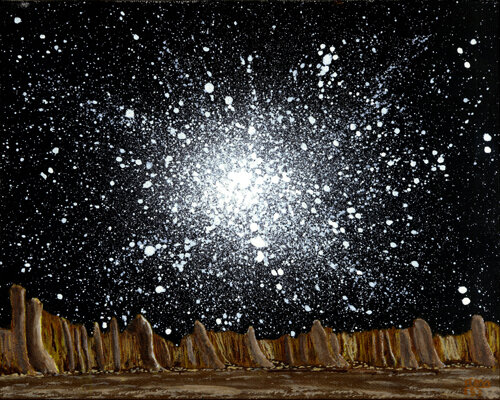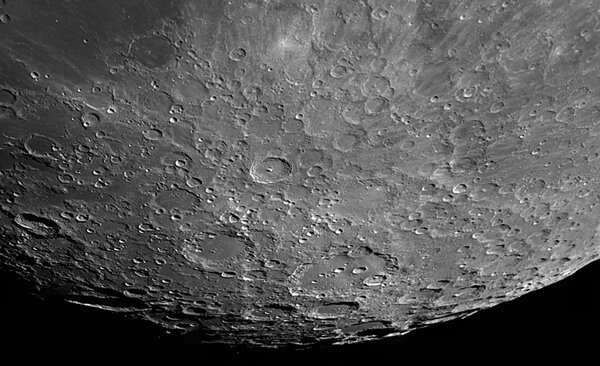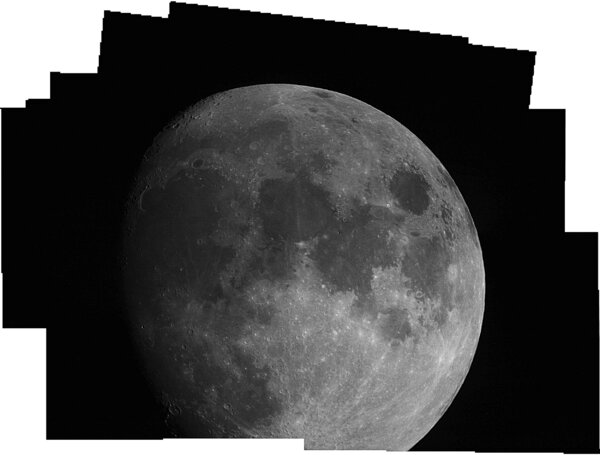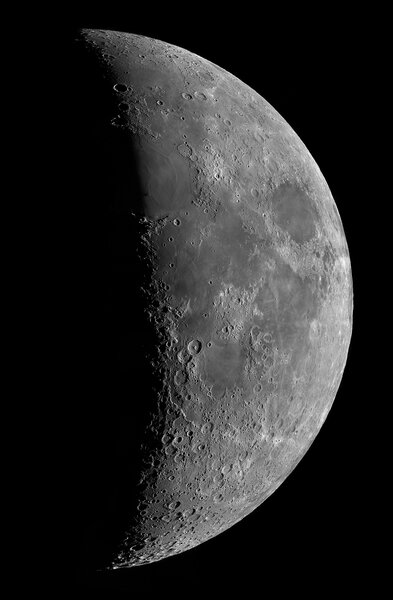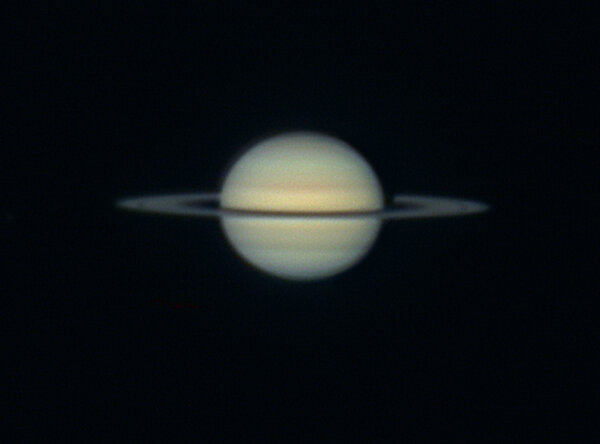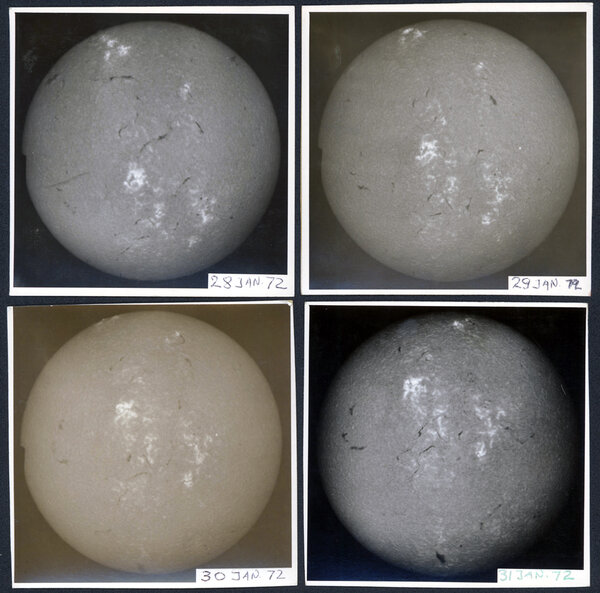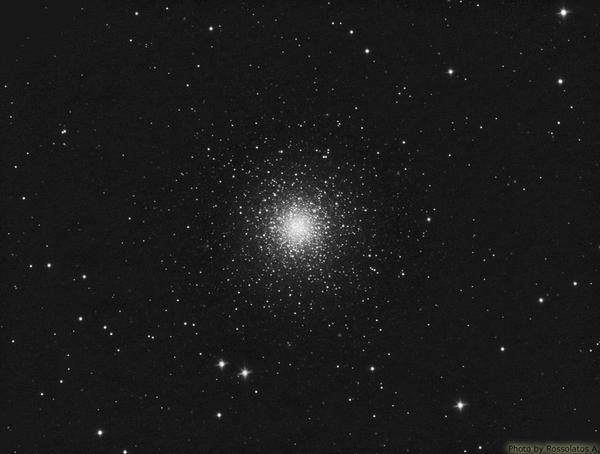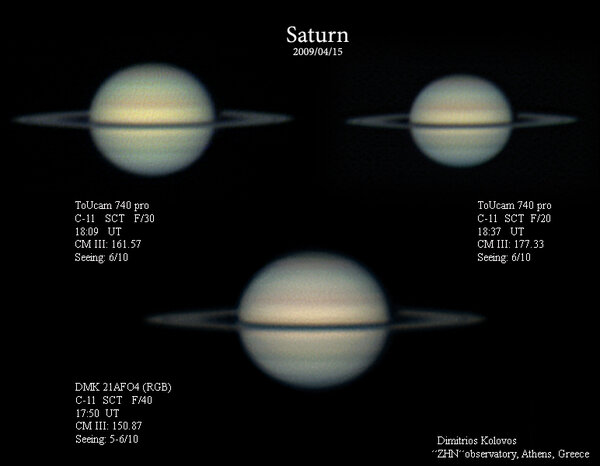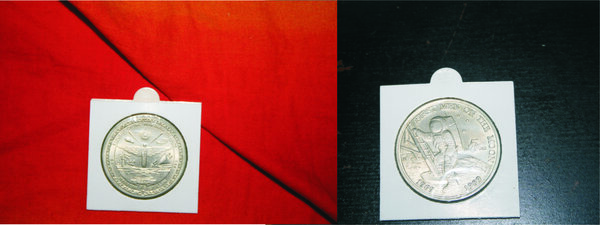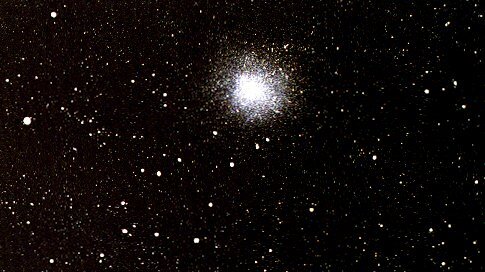-
Αναρτήσεις
1731 -
Εντάχθηκε
-
Τελευταία επίσκεψη
-
Ημέρες που κέρδισε
1
Τύπος περιεχομένου
Forum
Λήψεις
Ιστολόγια
Αστροημερολόγιο
Άρθρα
Αστροφωτογραφίες
Store
Αγγελίες
Όλα αναρτήθηκαν από Fred Ley
-
-
From the album: Personal Gallery Of Fred Ley
Here is a rendering of M13. It is done in acrylic on stretched canvas. The size is 8\" (20cm) x 10\" (25cm). Done in 1993. -
-
Hi Nio22, Seeing all these mosaics definitely whets my appetite to want to attempt an undertake of this sorts. I guess the hard part, after begging for a steady atmosphere, comes with the manipulation of the images in order to come up with a nice seamless final image. Good job and thanks for sharing. -Fred
-
-

θελω μεγαλο τηλεσκοπιο....20"-25"
Fred Ley απάντησε στην συζήτηση του/της daniela σε Πού και πώς να αγοράσω;
Hi Daniela, I just noticed this thread amd thought that I'd throw in my two cents worth too. Yes, purchasing a large Dob will completely alter your view point on observing the dim fuzzies-galaxies, nebula, globular clusters, planetary nebule, etc. Yes, and the moon too. I took a look at the moon through a 29-inch Dob and got blinded in my left eye. Of course it was temporay. I have looked at NGC4564 and M13 through a 24-inch using a 13mm Nagler (82-degree apparant field of view) eyepiece and M13 completely filled the field of view. The field of view was also covered with the galaxy NGC4564. That particular instrument had a 6-inch secondary and the primary was a conical shaped mirror. I noticed that you reside in Ioannina. There used to be a 24-inch telescope located up there in the 70's. It was manufactured by Astro Mechanics of Austin, Texas. The university used it and I wonder if it is still located there and in operation. If they have a public night, you might be able to view an object or two through the instrument just in order to get an idea of what a larger instrument has to offer. One other piece of advice is this. If you purchase a great instrument, try to also get great eyepieces to go with it. I know that eyepieces can be realtively expensive, but in the long run they are well worth the extra expense and the eyepieces stay with you as life long companions. My 13mm Nagler has been with me for 25 years now-great eyepiece. Actually, to let you in on a secret, I have way to many eyepieces. Most are not even being manufactured anymore. Here is a great site of a large Dob manufacurer. I am sure that you are aware of this outfit. Anyhow, what I wanted to do was advise you to explore this site as it has a lot of info on these large Dobs and will give you some positive and negative pointers as to choosing a unit. Their web site is at http://www.obsessiontelescopes.com/index.html and is well laid out with info. Having a large scope is great, but, if you can't use it as often you would like to, it might be better to get something slightly more manageable that you can use all the time and that will allow you to advance your pleasure of observing the night skies. Anyhow good luck on ultimately getting one of these beasties. If you plan on taking it out to a dark sky site, that naturally opens up another can of worms logistically speaking. Hope my input has been of some help to you. Clear Skies (which is what we live for) -Fred -

ΙΠΤΑΜΕΝΟ ΑΝΤΙΚΕΙΜΕΝΟ
Fred Ley απάντησε στην συζήτηση του/της BOMBER σε Αστρονομική Παρατήρηση - Γενική συζήτηση
Hi Bomber, I was wondering about the object that you saw and have two additional questions. 1. How long did it take for the object to transit the sun? 1 second? 2? 2. Did the object kepp the same orientation, or did it appear to be tumbling? -Fred -

Παρατήρηση Σούνιο Σάββατο 25/4/2009 Ε.Λ.Φ.Ε.ΑΣ
Fred Ley απάντησε στην συζήτηση του/της themis_kart σε Εξορμήσεις και τόποι παρατήρησης
Hey George, Naturally! But nothing alcoholic, that might end up making us see really strange and exotic "cosmic" things throught he eyepiece that nobody would believe. Have a blast. -Fred -

Παρατήρηση Σούνιο Σάββατο 25/4/2009 Ε.Λ.Φ.Ε.ΑΣ
Fred Ley απάντησε στην συζήτηση του/της themis_kart σε Εξορμήσεις και τόποι παρατήρησης
Don't forget the mandatory "souvlaki stop" for fuel. Got to keep the old body fit in order to suck up all those photons at the eyepiece. -Fred -

Παρατήρηση Σούνιο Σάββατο 25/4/2009 Ε.Λ.Φ.Ε.ΑΣ
Fred Ley απάντησε στην συζήτηση του/της themis_kart σε Εξορμήσεις και τόποι παρατήρησης
Hi, Well, it sounds like a good time was had by all and that's what counts. I enjoyed the photographs that were posted to this site too. -Fred -
Hey! I wish that the atmosphere was a bit more cooperative with this image. I noticed that on the "greenish" belt at tohe top of the image there three white spots. One is about dead center and the other two, which appear as one, are to the right. I draged the image across the screen and the white spots become apparent. -Fred
-

Παρατήρηση Σούνιο Σάββατο 25/4/2009 Ε.Λ.Φ.Ε.ΑΣ
Fred Ley απάντησε στην συζήτηση του/της themis_kart σε Εξορμήσεις και τόποι παρατήρησης
Achilleas, Thank you very much for the kind offer to give me a ride out to the observing site. Hope you all had a great time obsereving. -Fred -

Παρατήρηση Σούνιο Σάββατο 25/4/2009 Ε.Λ.Φ.Ε.ΑΣ
Fred Ley απάντησε στην συζήτηση του/της themis_kart σε Εξορμήσεις και τόποι παρατήρησης
Hi Achilleas, No wheels dude! You all have a god time. -Fred -

Παρατήρηση Σούνιο Σάββατο 25/4/2009 Ε.Λ.Φ.Ε.ΑΣ
Fred Ley απάντησε στην συζήτηση του/της themis_kart σε Εξορμήσεις και τόποι παρατήρησης
Have fun Everybody, I'll be there in spirit. -Fred -
Vangelis, It has been many years since I last looked throught the telescope. Initially, I used to go up to the observatory in Athens and spend the whole day with the U.S. Air Force personnel that then operated the instrument. When they moved to Pendeli, I went up there on rare ocassions due to the distance. When the project was canceled, the Air Force gave the telescope and the radio telescope, both at Pendeli, to the observatory. It is quite possible that the instrument is currently being used for research, which may prevent public access, or it may have some broken components and sits dormant. With the Razdow company long out of business, it may hard to find replacement components. There are two images of the telescope at this location on my web site, http://www.instrumentsoflight.com/athens1.html You will need to scroll down the page towards the end to see it. -Fred
-
Hey, I might as well throw in my 2 cents worth too. For the money that is being asked, 6,000.00 pounds, I am a bit surprised that the cooling fan is an extra option. It should be part of the scope. I'd rather get a 16-inch Dob and five good Naglers (or other quality eyepieces) that I would keep forever and ever. Also throw in some Lumicon type filters for deep sky observing and a good finder. One would still have quite a bit of cash left over. Probably enough to build a decent equatorial mount or be able to find a second-hand one or even find a small used vehicle to lug it around in. Of course a 16-inch mirror has 201 square inches of surface area, whereas a 20-inch mirror has 314 square inches of surface area. I wonder how stable the 20-inch scope is? -Fred
-
These four images were taken at the National Observatory of Athens in 1972. At that time a 10-inch (25cm) Ha telescope built by Razdow Laboratories in New Jersey, U.S.A., was operating in the dome of the old observatory on the Hill of Nymphs in Athens. This was a NASA project in support of the Project Apollo program. A world wide 24-hour watch on the sun maintained for purposes of monitoring solar storms that might be hazardous to the astronauts. The telescope currently resides at the Pendeli Astronomical Station of the National Observatory of Athens.
-
Hi HGG, Nice image you have there. The results are always amazing when the atmosphere decides to cooperate. Your mentioning the seeing reminded me about an observation of the Moon. I was using a 6-inch f/15 refractor with a 18mm 2-inch Orthoscopic eyepiece. Suddenly the seeing "snapped" into focus and all these small craters that I was not seeing on the floor of one of the Seas on the Moon became visible. It was amazing indeed. Of course lunar an plenatry observations do require that one send time at the eyepiece in order to catch the periods of excellent seeing. -Fred
-
-
-
Hi, Have you ever thought of using optical black flock paper? Here is a link to some information and prices. http://www.anchoroptics.com/catalog/product.cfm?id=229 -Fred
-
Hi Ammonite, That's a real nice image that you were able to capture. You were 2.5 miles away as you stated. I guess that you had to do a little bit of preparatory work in order to establish the correct location from which you were able to capture the image. Are there any more images from the event? -Fred
-

τοτε 20 χρονια τωρα 40 επετιακο νομισμα
Ο Fred Ley σχολίασε σε KONOPS για αστροφωτογραφία Διάφορες αστρονομικές φωτογραφίες
Hello Konops, The coin that you have is issued by the Republic of the Marshall Islands in the Pacific. They have an ambassy in Washington D.C. The coin that you have is not considered an "official" coin. It is not used in trade within the Marshall Islands as it is made by a private mint and not a government mint. Kindly take a look at this link for some further explaination. http://en.allexperts.com/q/Coin-Collecting-2297/1988-Marshall-Islands-5.htm The only United States coin that celebrates mans landing on the Moon is the reverse of the Eisenhower dollar that was issued between 1971 and 1978. Hope that this is of some help. -Fred -
-
From the album: Personal Gallery Of Fred Ley
Acrylic on stretched canvas-1995. 17.5"(44.5cm) x 23.5"(60cm).


